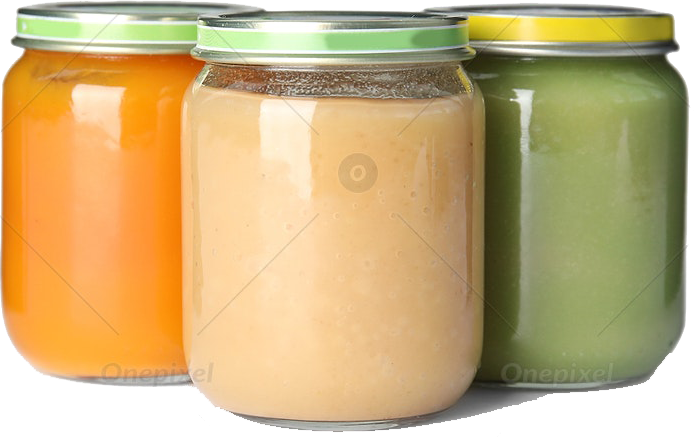
Baby Formula Company Receives
100% Results in Blind Testing
In April of 2015, the threat of potential glass contamination prompted baby food maker Beech-Nut to voluntarily recall more than 1,900 pounds of baby food, states the U.S. Department of Agriculture.
The manufacturer chose to issue the recall after a complaint of a consumer finding a small amount of glass in a jar and a report of an oral injury.
Had the broken glass issue been found prior to product distribution,
Oh, I know what
Won’t X-ray Radiation Effect Baby Food?
For a moment, let’s forget the discussion is about product testing, and let us talk about a similar and by far more common type of x-ray exposure to baby food.
The TSA Inspection of Baby Food and Breast Milk.
Traveling with a baby is a challenging and stressful process in and of itself; adding the concern of security check-ups and baby food supplies safety can nearly cause insanity.
Right?!
Safety of Baby Formula – Baby Food Packaging
Yet, while this is both a logical and common concern, voiced by mom’s traveling with baby food, it is unfounded. We believe the main reason why mothers are concerned is
It is not uncommon for mothers to be advised to “pump and dump” their milk for an arbitrary period of time subsequent to mammographic testing.
Nonetheless, this needless advise is given more out of excessive precaution for toward the maternal instincts of
Safety of Baby Formula and Other Baby Foods
That’s right, it is safe to put powdered milk and baby food through an x-ray machine.
In fact, we will share a case study shortly to
While x-ray radiation does have the ability to mutate DNA such that any live cells that have been exposed to it may mutate, resulting in cellular dysfunction or uncontrolled replication (i.e., cancer), the pure energy type of radiation used in mammogram and CT scan testing does not collect in the milk and is therefore compatible with uninterrupted breastfeeding.
What
We speak from years of experience.
Having worked with many brand names, [who for reasons of confidentially we cannot disclose], with similar concerns over the safety of x-ray testing of packaged baby food in glass jars for several decades.
In the early days of consumer packaging of baby food very few alternatives to glass packaging existed.
generic baby-food-jarsGlass was, at the time the most cost-effective and practical method — as it was perfectly suited for heating and sterilization of the food products being manufactured.
Sadly, glass baby food jars trend to crack and shatter leading to acute pieces of glass shards occasionally being found inside the baby food product and posing a threat to infants; such as in the Beech Nut recall mentioned at the beginning.
Fortunately, CXR Company had a solution back than to help detect consumer packaged goods (CPG) for potential foreign contaminant ; an answer still applicable today — 2D non destructive testing with X-ray.
For more on this topic see Do I need to worry about radiation >>>
The Impact of Baby Food Packaging Changes
As technology and
It also gives consumers more choices as illustrated by a blog post on According to Jenny comparing pouches versus jars of the very some brand.
Of course, this advanced in technology typically come with there own risks, especially when
These concerns are a result of insufficient enough knowledge of the chemicals and material used to make the packaging.
One example
There have been many examples of baby food and similar CPGs who have undergone recall. Some due to contamination and spoilage, others related to packaging issues – often leading to billions of dollars in losses and tarnished brand reputation.
Can of baby
It is also, important to realize — not all
Baby Food / Formula Company Case Study
Challenge:
A few
Solution:
Knowing that x-ray inspection technology can now address contamination concerns in baby food products with an increased metal detection capability down to a tiny 1.0 mm in glass jars and 1.2 mm in metal cans a baby formula manufacturer was interested in the technology for there product line
In addition, they were aware that glass contamination detection capability was and is currently in the range 2.5mm to 4.0mm depending on container type and size.
While this level of depth and precision inspection with x-ray exist, the baby formula manufacturing company, was also aware that x-rays
They want to implement NDT via
So, the large baby formula manufacturer sent out a set of seeded cans to various industry leading x-ray inspection companies; including CXR Company for a “blind test.”
The Result:
See NDT X-ray Inspection Case
As you can imagine, CXR Company won the job, and the future trust of a notable baby formula company, which has remained a loyal customer ever since.
It should
X-ray The Secret Weapon of Your Baby Food Company’s Future
By providing the most thorough contaminant detection testing, which in turn reduces the risk of product recalls, this energy efficient technology helps to protect young children, manufacturing businesses, brands
Satisfied Clients
Technician’s Performance was Excellent
“The technician’s performance was excellent and the x-ray machine and service were excellent as well. We will use CXR in the future if the need arises.”
From the Quality Assurance Manager of an automotive parts company in Ohio
Competent and Informative
“CXR’s technician was very competent and informative. The x-ray machine and service were well done.”
From the Supervisor of Manufacturing of a vitamin and nutritional supplement manufacturer in California
